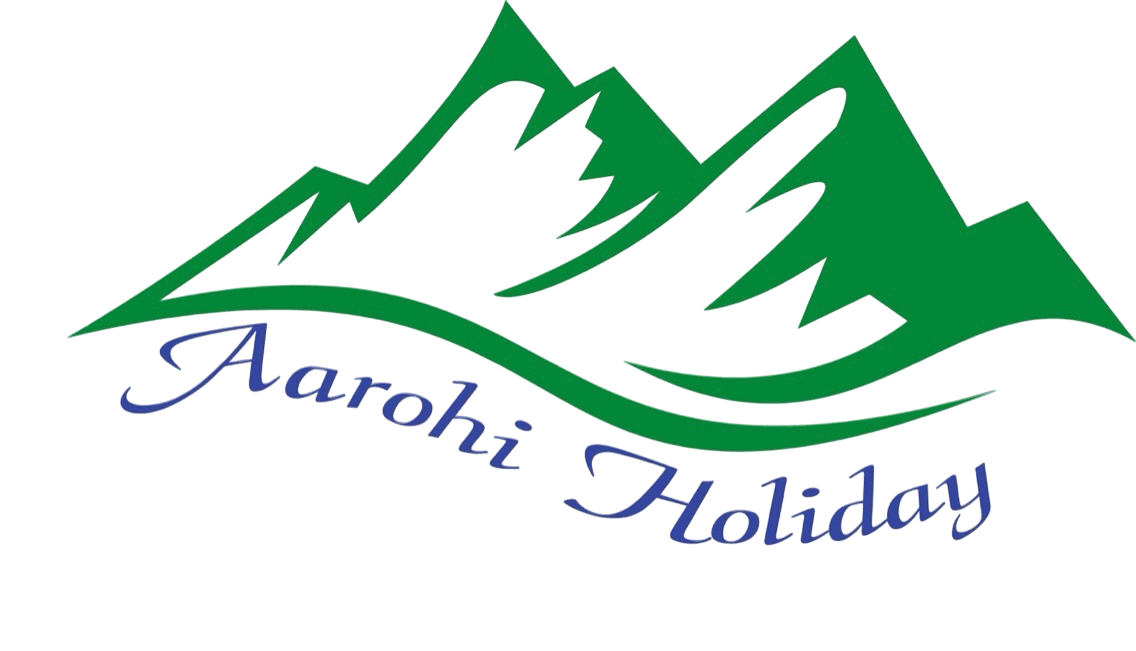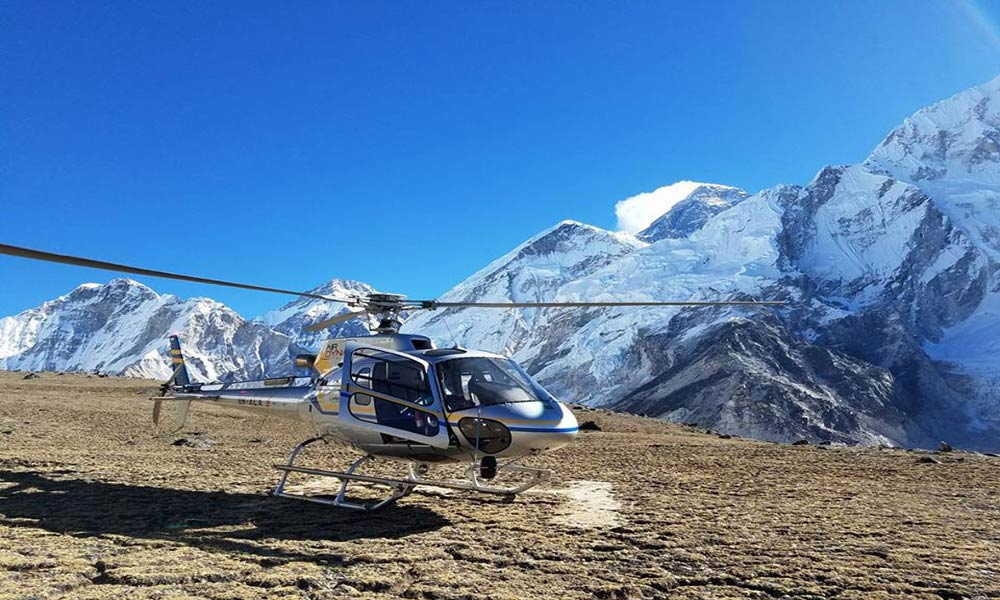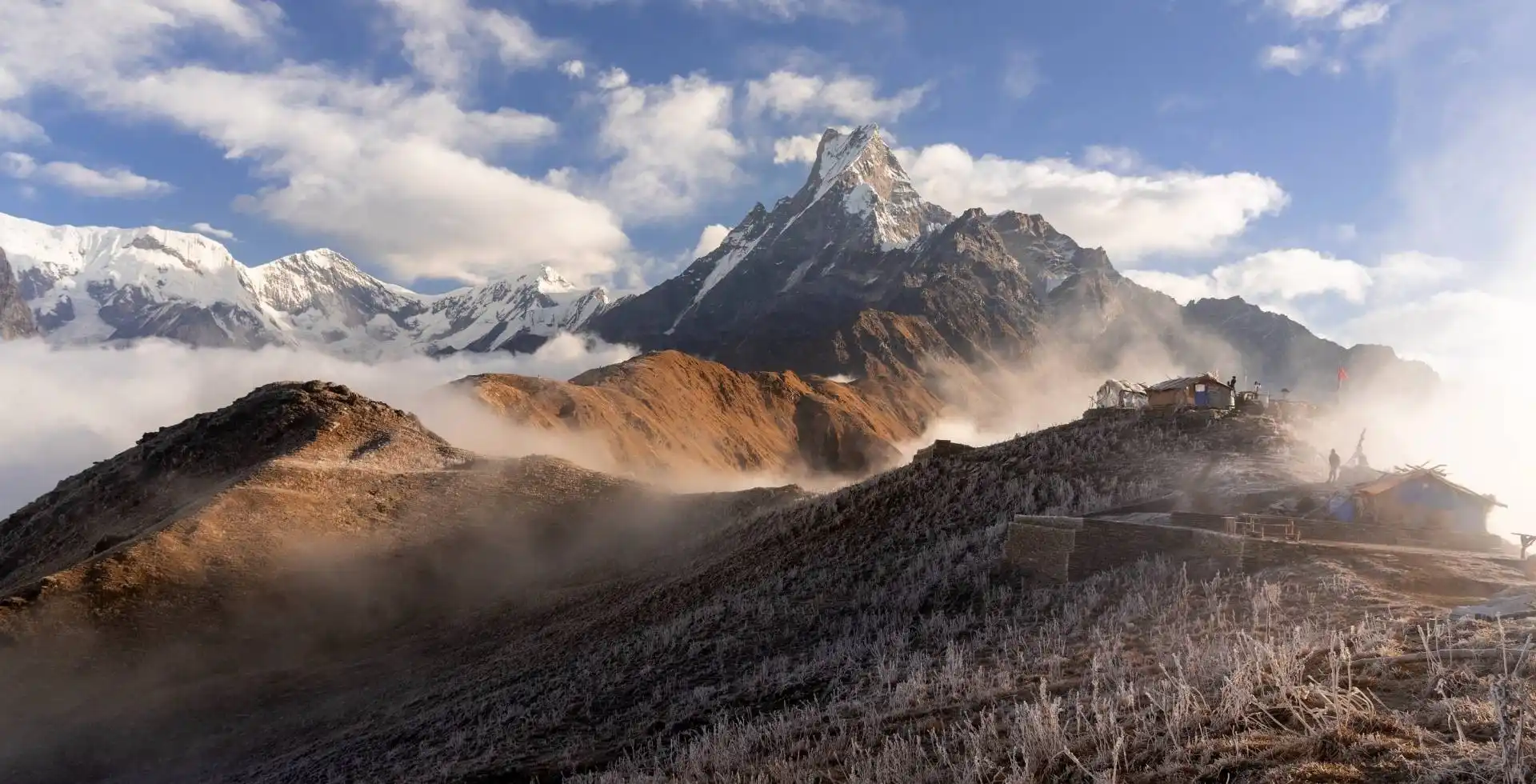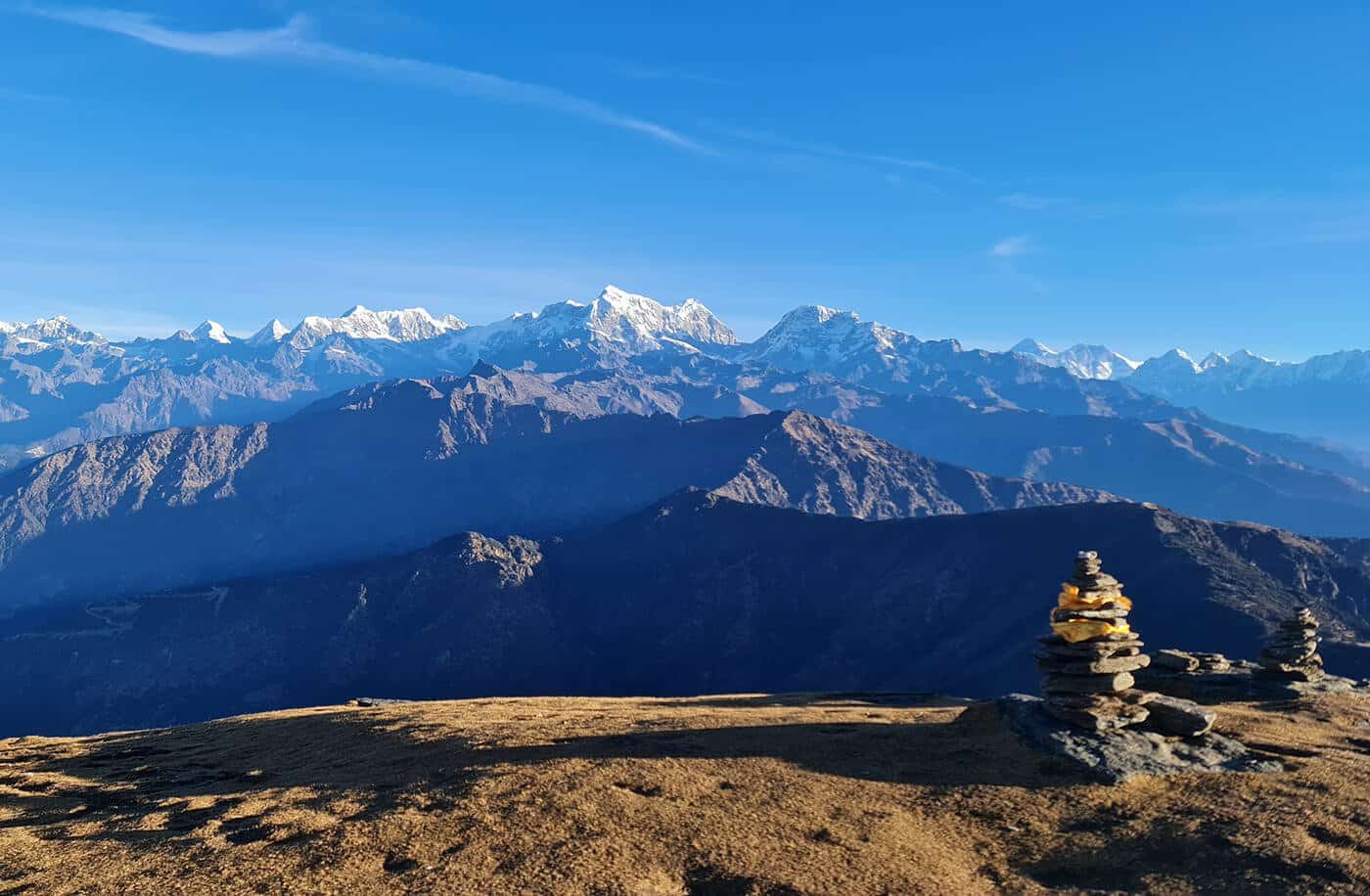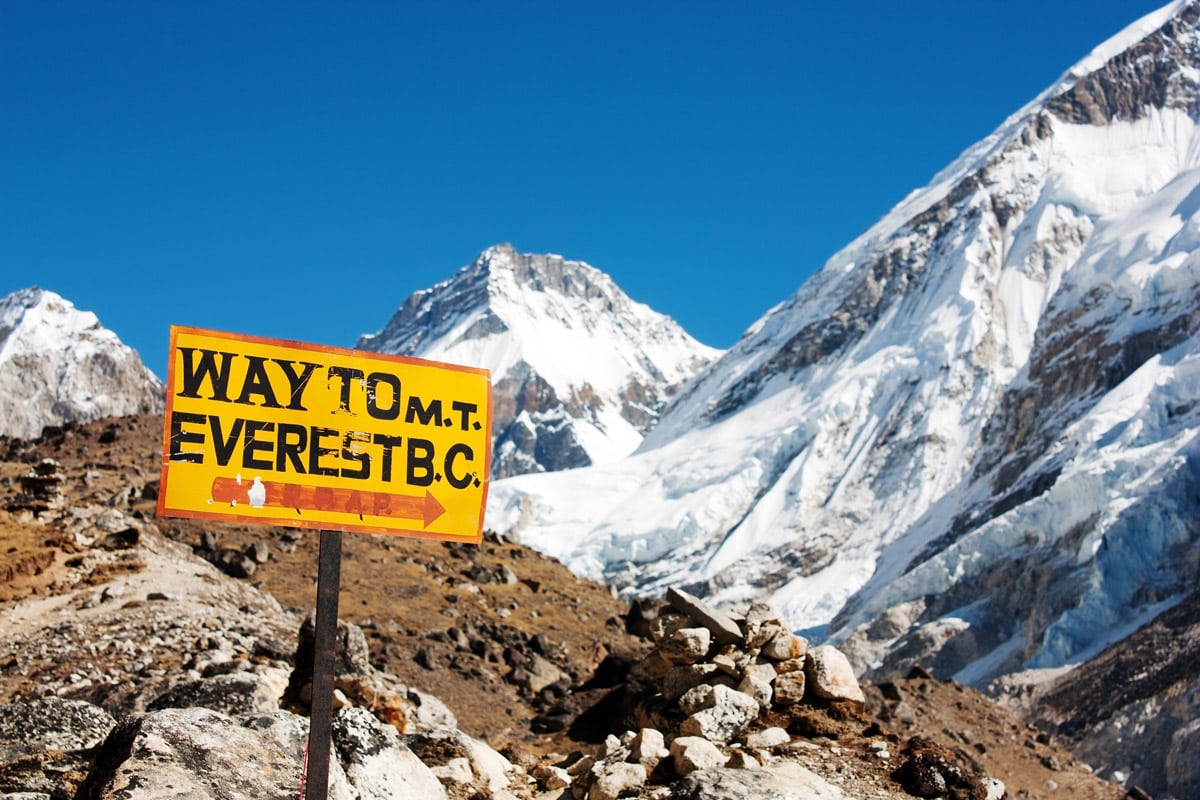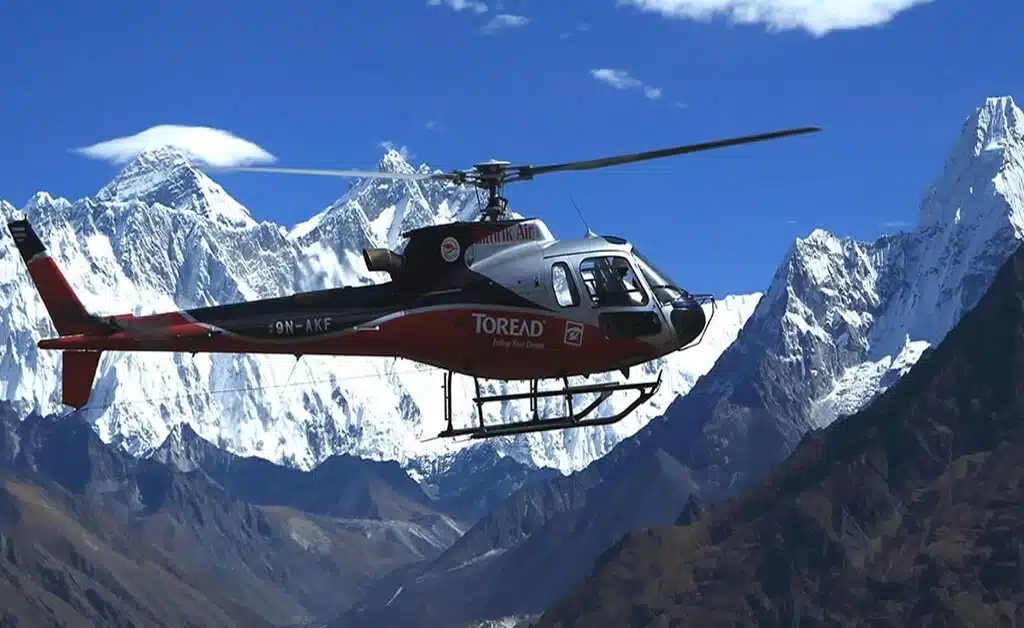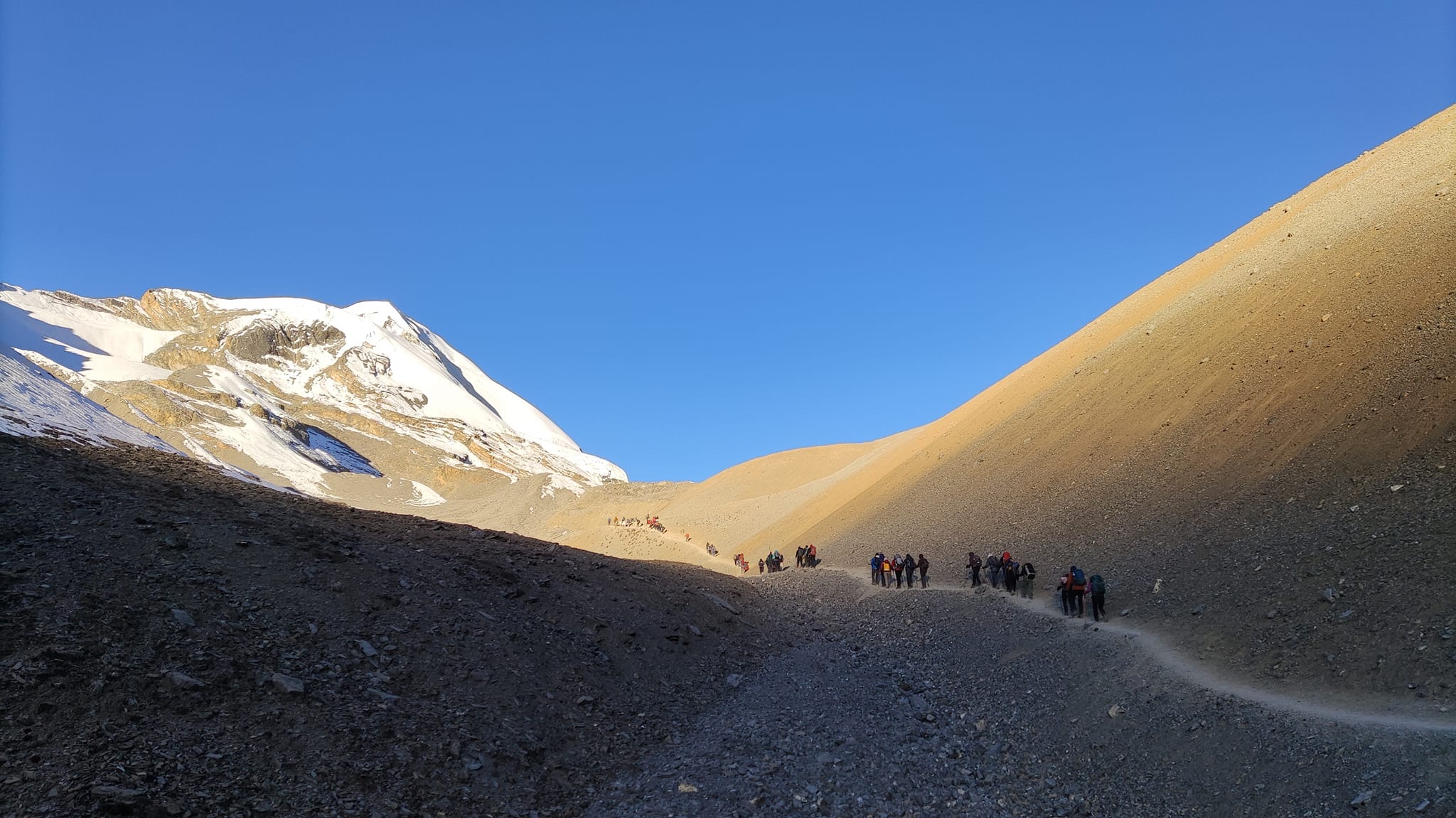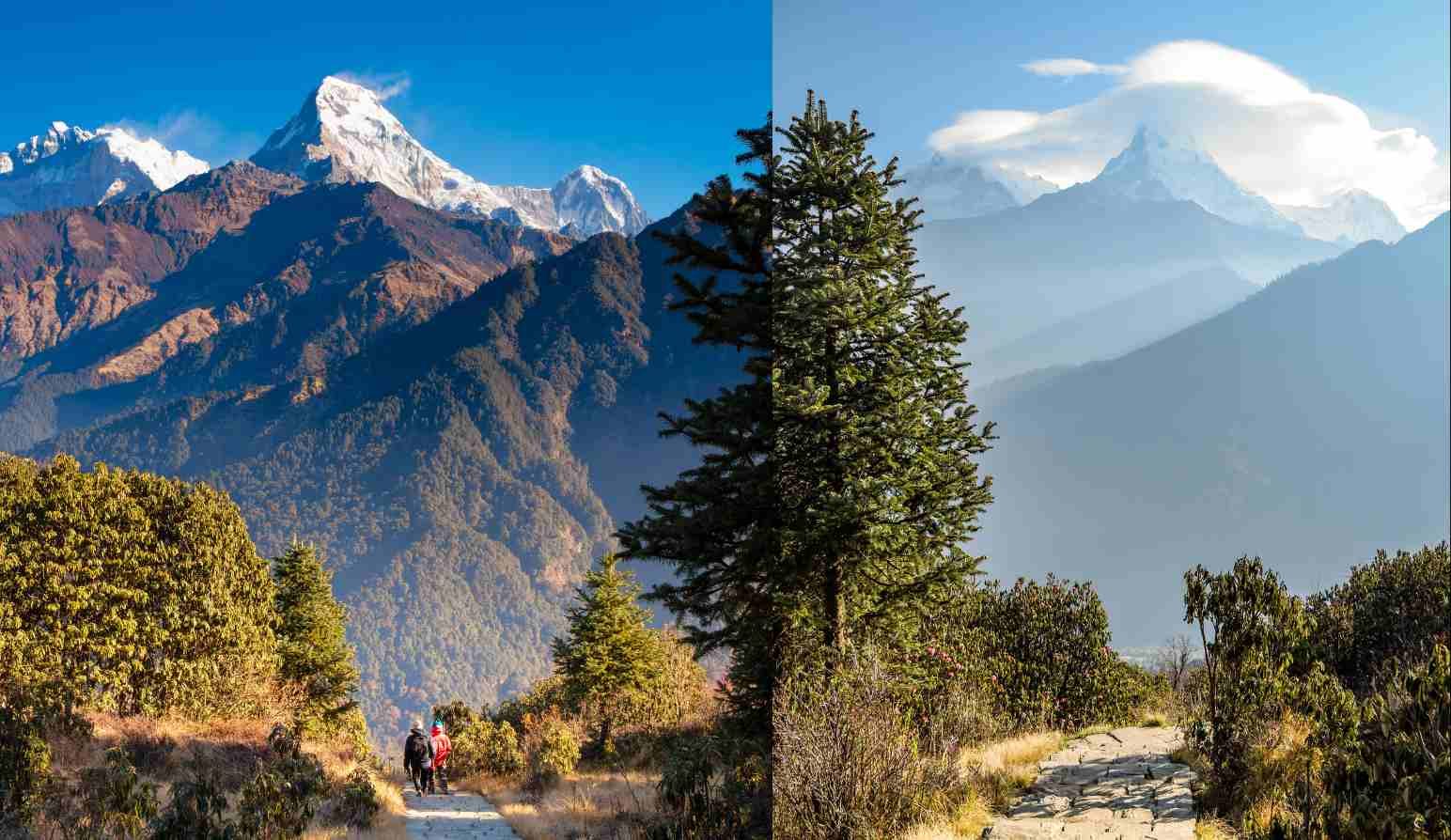Accommodation during Everest Base Camp Trek with Helicopter Return
- In Kathmandu we provide comfortable accommodation in 3-star hotels with breakfast on a twin-sharing basis.(Private room accommodation can be organized at an extra cost)
- During the trek, we provide comfortable teahouse accommodation on a twin-sharing basis. Hot showers, Wi-Fi, and device charging are available at an additional cost.
Meals and Drinking water on Everest Base Camp Trek with Helicopter Return
During the trek, you will be provided with three fresh and nutritious meals a day—breakfast, lunch, and dinner—served at local teahouses. You can choose your meals from the teahouse menu, which typically includes traditional Nepali dishes like dal bhat (rice, lentils, and vegetables), as well as a variety of options such as Tibetan bread, momos, noodles, fried rice, soups, pasta, pancakes, and eggs. The meals are simple yet freshly prepared and offer the energy you need for high-altitude trekking.
Staying hydrated is essential during the trek. While bottled water is available for purchase along the trail, we highly encourage the use of a reusable water bottle to reduce plastic waste. Our guide will provide water purification tablets or drops so you always have access to safe drinking water throughout the journey.
Required Permits for the Everest Base Camp Trek with Helicopter Return
For the Everest Base Camp Trek with Helicopter Return, you’ll need a TIMS Card and a Sagarmatha National Park Permit—but no worries, we’ve got it covered. All permit fees are included, and we’ll handle the paperwork so you can focus on the adventure.
- Sagarmatha National Park Entry Permit: NPR 3,000 per person.
- Khumbu Pasang Lhamu Rural Municipality Permit: NPR 2,000 per person
- TIMS Card cost: NPR 1000 per person
Best Time for Everest Base Camp Trek with Helicopter Return
Autumn (September to November) – Most Popular Season:
Autumn is the ideal time for the Everest Base Camp Trek. The skies are clear, the mountain views are stunning, and the weather is stable. This is also the busiest season on the trail, offering a vibrant atmosphere and excellent flying conditions for the helicopter return.
Monsoon (June to August) – Not Recommended:
Trekking during the monsoon is challenging due to heavy rain, slippery trails, flight delays, and limited mountain visibility. However, the landscapes are lush and green. It’s suitable only for experienced trekkers seeking solitude and don’t mind unpredictable conditions.
Winter (December to February) – Cold but Scenic:
While the trail is peaceful and the mountain views remain breathtaking, winter brings freezing temperatures, especially above 4,000 meters. Snowfall can block passes and affect flight operations, including helicopter returns. Trekking is possible but requires preparation for extreme cold.
Spring (March to May) – Second Most Popular Season:
Spring brings warm days, rhododendron blooms, and clear skies. It’s a great time to trek with fewer crowds than in autumn and reliable conditions for both trekking and the helicopter flight back from Gorakshep.
Everest Base Camp Trek with Helicopter Return Difficulties
The Everest Base Camp Trek with Helicopter Return is moderately to highly challenging, mainly due to its high altitude and daily walking hours. Trekkers can expect to walk 5 to 7 hours a day on rugged trails, with steep ascents, rocky paths, and occasional snow-covered sections. The route takes you up to 5,545 meters at Kala Patthar, where the risk of altitude sickness becomes more significant. Proper acclimatization, hydration, and a slow, steady pace are essential for a safe and successful trek.
Although the helicopter return from Gorakshep reduces physical strain on the descent, the upward journey still demands strong physical fitness and mental endurance. Weather in the Everest region can be unpredictable, with cold mornings and windy afternoons, especially at higher elevations. While the trek doesn’t require technical climbing experience, it’s best suited for those with good fitness and preparation. With the right gear and mindset, even fit first-time trekkers can complete this iconic Himalayan adventure.
Altitude Sickness and Prevention on the Everest Base Camp Trek with Helicopter Return
At Aarohi Holiday, your safety is our top priority. Our licensed guides are trained in altitude awareness, first aid, and emergency handling. They monitor trekkers closely for signs of Acute Mountain Sickness (AMS) and follow a well-paced itinerary to support proper acclimatization.
If symptoms like headache, nausea, or shortness of breath occur, we take prompt action—this may include rest, hydration, descent, or emergency evacuation if needed. Before the trek, we provide a detailed safety briefing and stay in constant communication throughout the journey. With expert support and proper precautions, this high-altitude trek becomes a safe and rewarding adventure.
Travel Insurance for Everest Base Camp Trek with Helicopter Return
Travel insurance is strongly recommended for the Everest Base Camp Trek with Helicopter Return. The high altitude, unpredictable weather, and remote terrain make it essential to have coverage that includes high-altitude trekking (up to 6,000 meters) and emergency helicopter evacuation.
A good policy should also cover trip cancellations, medical expenses, delays, and lost baggage. Before starting the trek, we advise all trekkers to review their insurance details carefully and carry a digital or printed copy during the trip. It’s a small step that ensures peace of mind and safety in the Himalayas.
Everest Base Camp Trek with Helicopter Return Itinerary
The Everest Base Camp Trek with Helicopter Return offers the perfect blend of adventure, natural beauty, and comfort. Your journey begins in Kathmandu with a day to explore its vibrant culture and ancient heritage. From there, a thrilling mountain flight takes you to Lukla—the gateway to the Everest region—where the real adventure begins. You’ll trek through scenic Sherpa villages like Phakding and Namche Bazaar, gradually ascending through rhododendron forests, suspension bridges, and panoramic mountain views. Along the way, you’ll visit the sacred Tengboche Monastery, rest and acclimatize in Dingboche, and continue to Lobuche and Gorakshep, eventually reaching the legendary Everest Base Camp (5,363m).
The next morning, you’ll hike up to Kala Patthar (5,545m) for an unforgettable sunrise view over Mt. Everest and its surrounding peaks. After soaking in the stunning scenery, a chartered helicopter whisks you away from Gorakshep, offering a once-in-a-lifetime aerial perspective of the Himalayan giants you just trekked among. This helicopter return not only adds a touch of luxury but also saves time and energy, making it ideal for trekkers seeking a complete Everest experience in fewer days. The journey ends with a smooth return to Kathmandu—leaving you with lasting memories of the world’s most iconic trekking route.
Everest Base Camp Trek with Helicopter Return Cost
The cost of the Everest Base Camp Trek with Helicopter Return varies by season and group size. Our 12-day package is priced at USD 3,150 per person, covering all essential services from Kathmandu to return, including the helicopter flight from Gorakshep. This rate is based on a minimum of one person. For groups, we offer a 5% to 10% discount, and the group leader goes free. Contact us for customized pricing based on your group size and preferred travel dates.
Important Notes for EBC Trek with Helicopter Return
- In high season, Lukla flights operate from Ramechhap, about 5–6 hours’ drive from Kathmandu. In low season, flights are usually from Kathmandu. We arrange all transfers as needed.
- This itinerary includes travel by shared bus to Ramechhap. If you prefer a private jeep, please let us know—we’ll be happy to provide the additional cost.
- Porters can carry up to 20kg, but we recommend packing under 10kg since we provide one porter per two trekkers. A duffle bag for your gear will be provided.
- Meals are included on the trek, but extra charges apply for hot showers and charging devices at teahouses/lodges.
- Meals are not included in Kathmandu.
- A shared helicopter flight from Gorak Shep to Kathmandu
- Drones require hard-to-get permits, so it’s best not to bring
Flight to Lukla
Flights to Lukla operate from either Kathmandu or Ramechhap, depending on the season. If flying from Ramechhap, it’s about a 5–6 hour drive from Kathmandu, followed by a 30–40 minute flight to Lukla. Himalayan weather can be unpredictable, with fog or strong winds sometimes causing delays or cancellations. Early morning flights have the highest chance of being on time. We arrange all transfers and keep you updated on any changes. Helicopter charters are also available at an additional cost.
Fitness Preparation for the Trek
Preparing for the Everest Base Camp trek requires good physical fitness, especially since the trail involves long days of walking at high altitudes. Even with a helicopter return, trekking to EBC is physically demanding. Regular walking, hiking, and cardio exercises will help strengthen your legs and improve endurance. Proper preparation ensures you can enjoy the trek comfortably and safely.
A Typical Day on the Trail
A typical trekking day on the Everest Base Camp trek lasts about 5 to 7 hours. You’ll start after breakfast and hike through diverse landscapes, including rhododendron forests, Sherpa villages, and steep stone staircases. The altitude gradually increases, reaching about 5,364 meters at Everest Base Camp. Along the way, you’ll enjoy spectacular views of towering peaks like Everest, Lhotse, and Ama Dablam. Regular breaks for lunch and short rests help maintain your energy and make the journey more comfortable. After reaching the base camp, you can take a shared helicopter flight from Gorak Shep to Kathmandu, saving time and enjoying a scenic aerial return.
Arrival Instruction
Upon your arrival at Tribhuvan International Airport, our company representatives are stationed to welcome you to the country. We request you to carefully look for your name being held by our representatives following the events upon landing. The representatives are responsible to escort you to your hotel in Kathmandu. You will see men offering you to carry luggage and take you to your destination as you exit the airport. We request you pay no attention to these people and follow the designated representatives and follow their instructions. You will also need to keep an eye on your luggage and belongings to avoid any complications.
Nepal Visa Entry Procedure
For entry into Nepal, there are visa requirements everyone (except Indian nationals) must complete before being allowed to pass through immigration. This is for air travel as well as overland transportation. Most visitors may obtain a visa to enter Nepal, however, there are exceptions.Three options are available for entry
- 15-day single entry: US $30
- 30-day single entry: US $50
- 90-day multiple entries: US $125
Please have a passport valid for at least 6 months from the time of entry, and have cash ready, preferably in US dollars, though there are other currencies Nepal Immigration accepts. If you are entering via overland, you must have US cash and 3 passport photos. For arrival by air, the kiosks at the airport take your picture for you.
For the most up to date list of exceptions for visa on arrival or to obtain the most current visa information, visit the Nepal Department of Immigration website.
